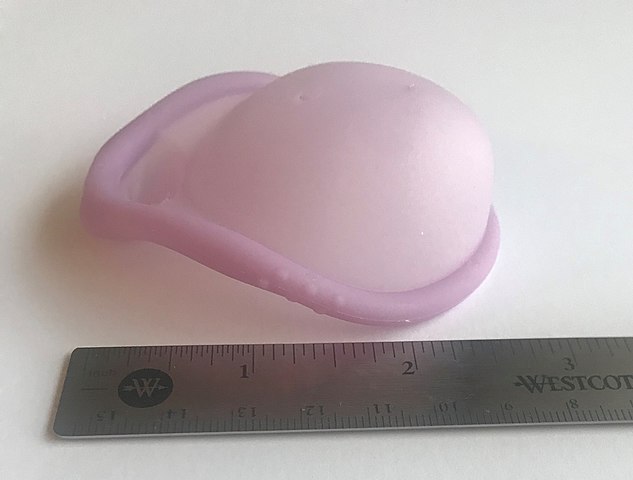Contraception
Barrier Contraception Methods
Barrier contraceptive methods include condoms, diaphragms, cervical caps, and vaginal spermicides.
Male Condoms
Male condoms are safe, effective, inexpensive, and have reversible effects. Male condoms that successfully prevent pregnancy are manufactured using latex, lamb caecum, or polyurethane. For patients with latex allergies, polyurethane condoms are a good alternative. Latex condoms should only be used with water-based lubricants (KY jelly, spermicidal agents). Oil-based lubricants such as lotion, petroleum jelly, or massage oil may damage the condom. Male condoms prevent pregnancy and protect from STDs (cervical cancer). In the first year, failure rates with condom use are 3% with perfect use.[1] Failures occur more frequently when condoms are not used than when condoms are used with malfunctions such as slippage or breakage.
Female Condoms
Female condoms are loose plastic pouches that line the vagina, with the inner end covering the cervix and the outer end covering the labia. Female condoms should also be used with spermicides. They can be inserted 8 hours before intercourse and should be removed after coitus before the female stands up. The failure rate of female condoms is between 5-20%. The use of female condoms lowers the transmission of STDs.
Female Diaphragm

The female diaphragm contraceptive is made of latex and has a dome shape. When using the diaphragm, it rests between the posterior aspect of the symphysis pubis and the posterior fornix of the vagina, covering the anterior vaginal wall and the cervix. It prevents sperm penetration into the cervical canal and cervical mucous from neutralizing vaginal acidity, which is hostile to sperm.
Female diaphragms should also be used with spermicidal cream. When using a diaphragm, it is best to use the largest comfortable size. It should be placed up to 6 hours before intercourse and left in place for 6 hours after intercourse. It should be worn for no more than 24 hours total. The diaphragm has a 20% failure rate with typical use. The diaphragm has a 6% failure rate over the first year with perfect use. The effects are reversible and have few side effects, such as urinary tract infections, but do not protect against STDs.
Cervical Caps
Cervical caps have the same effectiveness as the diaphragm but are harder to fit because they are held by suction. Cervical caps must be left in place for at least 6 hours after intercourse and used with spermicides. They can be left in place for 36 hours total. The cervical cap has a 20% failure rate with typical use. The cervical cap has a 6% failure rate over the first year with perfect use.
Vaginal Sponge
Vaginal sponges are used with polyurethane and nonoxynol 9. They release spermicides during coitus, absorb sperm, and block the entrance of the cervix canal. They can be inserted up to 24 hours before intercourse but must be removed after 30 hours. The failure rate of vaginal sponges is 10-15%.
Spermicides

Spermicides contain a gel, foam, cream, film, suppository base, and an active chemical agent such as nonoxynol-9. Spermicides can be used alone, with the diaphragm or cervical cap. The failure rate is 5-25% within the first year of use. Spermicide must be used at least 15 minutes before intercourse to allow it to adequately disperse. They are accessible, easy to use, safe, and enhance the efficiency of other forms of contraception. Decrease the risk of STDs by approximately 25%. Spermicides are not good options for patients who are allergic to any spermicide component or if the vaginal anatomy is abnormal.
Image Sources
- Figure 1. “Contraceptive diaphragm” is from HiGyn via Wikimedia Commoons, licensed CC BY SA 4.0.
- Figure 2. “Spermicide” is from Ceridwen via Wikimedia Commons, licensed CC BY SA 2.0 France.
- Majra, JP. “Use of condoms: clarifying the message.” Indian journal of community medicin : official publication of Indian Association of Preventive & Social Medicine vol. 35,2 (2010): 362. doi:10.4103/0970-0218.66860 ↵

